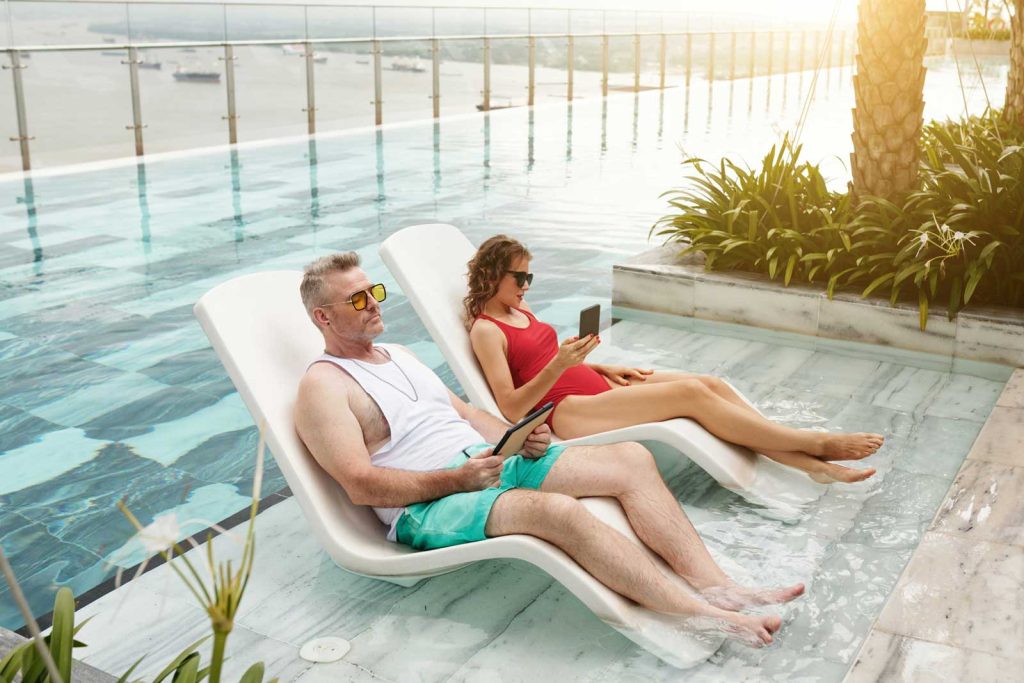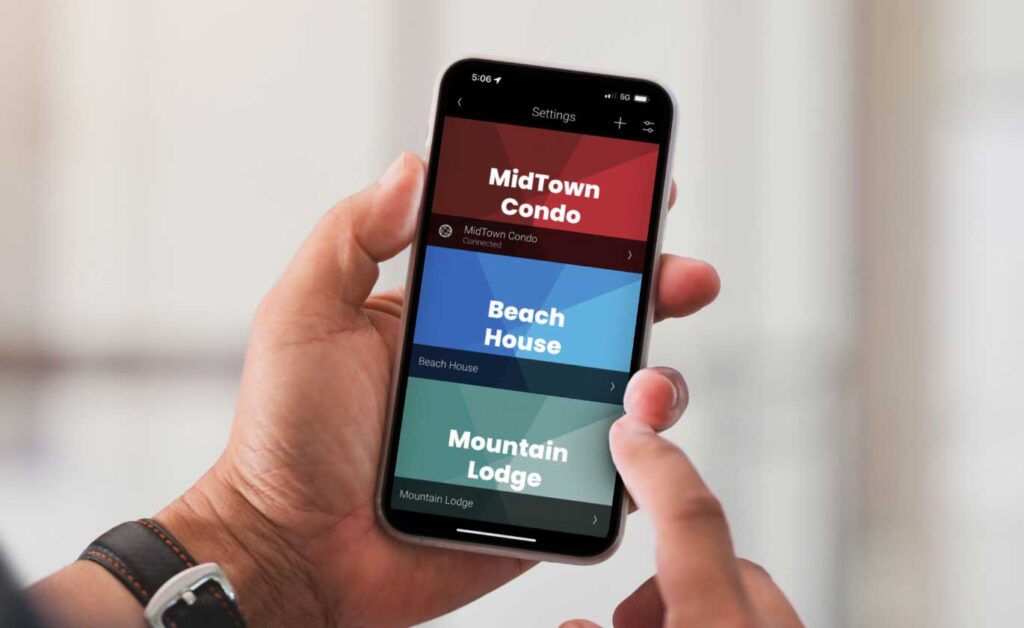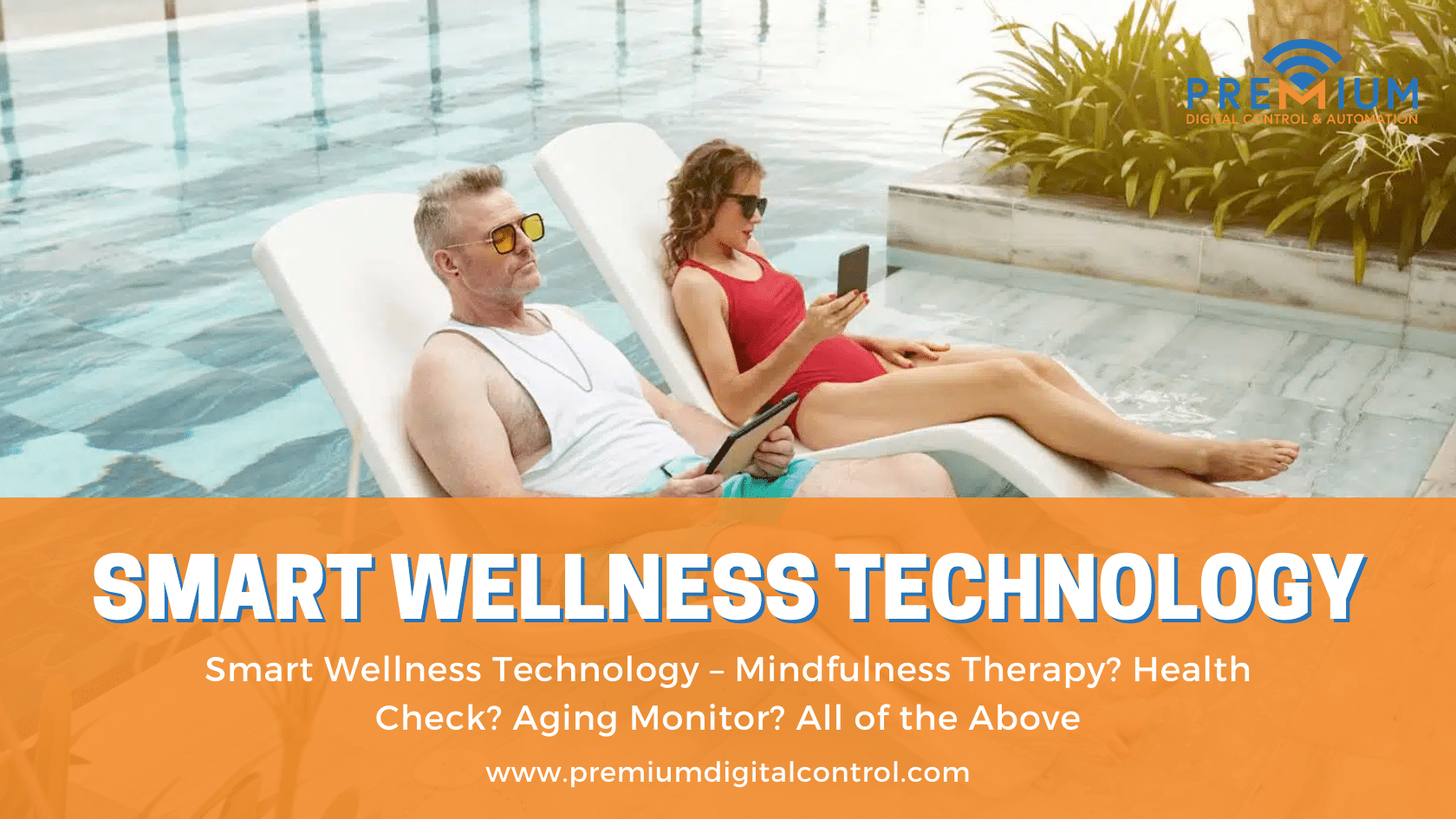
When you come to Amrit Ocean Resort & Residences, a luxurious 100,000-square-feet ocean wellness center and spa in West Palm Beach, Florida, prepare to be pampered like you’ve never been pampered before. You can bask in an exclusive indoor/outdoor hydrothermal experience featuring heat therapy, cryotherapy and hydrotherapy; consult with naturopaths, nutritionists or acupuncturists; attend juice cleansing and organic food demonstrations; have some quiet meditation and yoga sessions; or work with certified experts on your Personal Wellness Roadmap.
If you look at wellness this way, it’s inspired by mindfulness. It’s where wellness meets inner science with research and technology. It’s just that it happens in a wellness resort. Now, what if you had something like Amrit’s wellness offerings in your own place? It’s not going to be exactly as lavish or comprehensive but something that takes you on a health and wellness journey?
This is how many people are adapting smart h–me wellness. One begins as a hobbyist and tries it at a spa, learns as a DIYer and then hires professionals to get full-scale automation. A hobbyist may have experienced it at Amrit or someone’s domicile with a smart light bulb or wireless speaker on top of seeing an ad here and there. A DIYer looks to find out if he or she can integrate one device over another after the initial curiosity has been satisfied. A full automation adopter realizes that smart technology can go beyond one or two products to having entire spaces automated.

A Mckinsey study has more elaborate classifications for smart technology adopters and how they prioritize wellness:
- Social Climbers (33%) with interests in utilities, security and wellness
- Affluent Nesters (16%) with interests in security, wellness and utilities
- Family First (14%) with interests in security, wellness and entertainment
- Urban Dwellers (12%) with interests in security, utilities and wellness
- Traditionalists (11%) with interests in security, utilities and entertainment
Beyond wellness as mindfulness, though, others define wellness differently – as a health monitoring system. As more devices are Wi-Fi-enabled, we will see more integrations that allow one to monitor their health using various devices – wall keypad, a remote control, smartphone or tablet, even a voice assistant. Smart ho-e wellness for health monitoring will play a role in thi
Right now, smart h–me usage has been up 33%. The market revenue rose in 2021 to over $28.8 billion, with a projected market penetration rate of 42.5% by 2026. Global growth predictions by Grand View Research place it at $531 billion by 2030. In the United States, Statista placed its annual growth (CAGR 2022-2026) to hit 11.24%, resulting in a market volume of US$48.15 billion as early as 2026.
The benefits of smart h-me wellness is different for the majority of consumers, though. The perceived view is that it transforms your space into a personal oasis – and that in itself is considered wellness.
- Smart lighting can indeed enhance your mood, concentration and energy levels
- Automated shades can be programmed to work with your body’s circadian rhythm and promote restorative sleep, while allowing natural light into your home at certain times of the day. If your windows even open to show nature, that could even set the mood for you to reduce your blood pressure or heart rate
If we go by that mindset, smart h–me wellness can harness ideas from other connected subsystems such as surveillance cameras, smart lighting, audio-video distribution, motorized shades, and climate control systems. Structured cabling and enhanced Wi-Fi can provide the structure.
Wellness real estate
Speaking of structure, wellness real estate, or homes built to promote health and wellbeing, looks set to keep the smart technology even more exciting, as it’s already a $134 billion market. This is what real estate and tech firm Delos foresees, as it developed the WELL Building Standard (now administered by the International WELL Building Institute). It’s a series of measures that sets the bar for healthy living through improved air quality, sleep cycles, and cognitive functions.
The institute has certified more than 100 projects that integrate air filtration, anti-mold and anti-microbial surfaces, chemical-free materials, lighting that follows the body’s natural rhythms, and consistent water filtration evaluation.
Wellness monitoring is tied in with products – health devices coming out with a connected scale, elderly parent/child activity monitor, smart health monitor, connected pill case, a connected health monitor and a connected heart rate tracker. This can be attributed to the urgency that COVID-19 has created, with clean surfaces and filtered air as their wellness priorities.

How other subsystems complement wellness
But going by each technology to complement wellness, the security and surveillance subsystems are proving to be the most popular technologies, followed by lighting, entertainment, energy management and HVAC with the benefits for each outlined below:
- The security and surveillance application segment dominated the global market and accounted for the highest revenue share of around 31.0%. This is owing to the rising demand for smart home devices such as burglar alarms, window sensor alarms, and security cameras, which inform users of a potential threat or security breach.
- The energy management segment is anticipated to witness substantial growth due to increasing awareness on energy-efficient devices. It’s just a matter of time before more health devices are produced on a mass scale with this development
- During the pandemic, many customers adopted smart home gadgets, out of health safety concerns and to curb the spread of the virus. Consumers used smart devices such as robotic cleaners to keep the home tidy, video doorbells for reducing hand contact, and innovative security cameras for safety purposes.
- Increased penetration of smart digital assistants, such as Alexa and Google Assistant, among households for easy communication and entertainment has led to significant market growth.
Wellness for aging population
All these peripheral devices complement the aging population. Quick deployment of smart devices, such as lights, thermostats, and door locks can streamline the control and management of basic household chores for them.
Technology will certainly make it easier for the elderly to age in place. This population is expected to significantly impact the market growth as demand for smart devices to monitor and control their health and set reminders for their medicines and appointments with physicians.
Depending on age, some may perceive wellness technology as a luxurious lifestyle or comfort – a way to optimize home environments. Architects will eventually find themselves designing spaces more attuned to the wellness of an aging populace, including features that can ward them off viruses.
Household appliances such as smart refrigerators can be also programmed for one’s health with controls or reminders for reordering or preparing food or medicine.
Below are some products and ideas that straddle the category of smart h–me wellness and luxury. They’re beyond the usual smart technology products that integrators plan, design and program. They’re mentioned here for their interesting value and are not endorsements on our part:
This ECG vest is aimed at achieving essential health monitoring for people with arrhythmia. Called the Viscero, it has electrodes designed into the fabric of the vest with electronic ink. A detachable “brain,” containing power and processing, can be removed for charging. Data can then be shared.
Toto’s new product, the Washlet RW, is a toilet that contains a sensor-driven function with a motor-driven lid that raises as you approach, then drops and automatically flushes as you depart.
Air quality sensors
Air indoors can contain 2 to 5 times more air pollutants. Installing air purifiers in an entire space is one thing, deodorizing food with the touch of a button is another.
Assistive medical robots
Assistive medical robots are still new but they have voice and facial recognition software which will help in tracking information about a user’s health and apply that knowledge as required.
Comfort-focused shades, audio and climate control systems
Get automated blackout curtains to reduce light pollution, complement it with natural sounds that lull you to sleep and have your room temperature-controlled rooms as the night wears on.
Food testers
Viome helps you test your gut microbiome and measure your health down to the molecular level to get personalized nutrition recommendations and supplements from an app
Infrared sensors
Heat-detecting sensors to track viruses could find their way to your space. They could check the body temperature of household members and track the onset of fevers.
Lighting for sleep regimen
Installing smart lights can improve your family’s sleep regimen – and overall mood. It can also get your digestive system and hormone levels regulated.
Motion sensors
Traditional medical alert systems require a button to call for help, but new motion sensor technology installed in homes can detect a fall and even call for help if the senior is unable to ask for assistance.
UV disinfectant lights
UV disinfection lamps and wands can eliminate germs, bacteria, mold and viruses in seconds
Health monitoring system
Have a monitoring system perform a multitude of tasks such as taking daily temperature and keeping track of remote therapy appointments. Get one that allows for telemonitoring of oxygen saturation, blood pressure, body temperature and respiratory biometrics and more.
Smart pill dispensers
Smart pill dispensers can manage prescriptions, dispense medications and alert users when a refill is needed. They can be hard to remember on medication time, especially if one is living with a condition like Alzheimer’s disease or dementia.
Conclusion
Some of these products have standalone functionalities, but they’re helping us integrate them to our devices for easier control. They’re going to play a big role in their integrations with smart technology or devices you use, because they provide the ultimate modern convenience
Some of these products peaked during the pandemic which then hastened the growth of health and wellness technology. But which products are considered wellness technology? For now, wellness can mean a lot of different things.
Wellness may be a luxury for some, essential for others, practical and healthy for many. Still, others think the technology is there for people to define health and wellness for their way of life. For smart technology integrators at least, a lot of these new technologies can easily be integrated into a system – and people’s lives, whether that is for their personal space or their business.
They just have to ask how they can work best for their needs.


